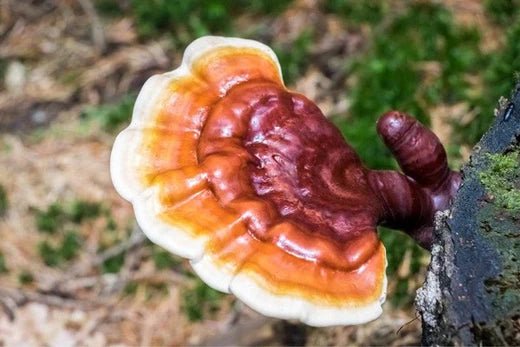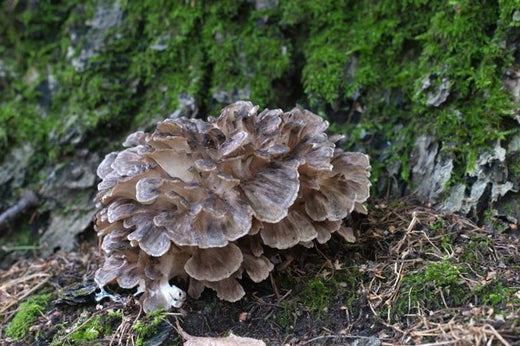Mushroom Science (Mycology) | Substantial Women's Contribution

Welcome to the fascinating realm of mycology, the study of fungi, which despite being largely overseen by men in modern times, has a rich and diverse history deeply interwoven with the feminine touch.
Rewinding the clock, it's impossible to ignore the pivotal role women have played in pushing the boundaries of this exciting field, turning it into the mushroom science powerhouse we see today.
As beautifully captured in the article "Mushroom HERstory" from Radical Mycology, the story of women in mycology is indeed a tale worth telling, a narrative that redefines the perception of "How Women Shaped Mycology" across ages.
Once upon a time, our society was divided into two spheres, the public world of men hunting and working, and the private one of women, who took up the crucial role of gathering wild mushrooms and plants. Their task? To nourish and heal their families. These women, affectionately referred to as "herb-wives", were the true guardians of the hearth.
Their intimate relationship with mushrooms, refined over countless generations, allowed them to cultivate a profound knowledge and understanding of fungi. It's safe to say that they were the original mycologists, their wisdom subtly carried through the ages.
In this narrative, we'll delve into how these women, the unsung heroes of the past, shaped the future. It's their relentless effort that laid the foundation for the leaps and bounds we see today in mycology and the science of medicinal mushrooms.
Table of Contents
Original Mycologists | Women
Step into the captivating era of the European Renaissance, a remarkable period between the 14th and 17th centuries, where the landscape of medicine was beginning to morph dramatically. This time of change witnessed the shift of medical practices from their ancestral roots to a more institutionalized profession, a transformation that was both remarkable and, unfortunately, exclusive.
Interestingly, during this period, the scientific library remained a receptacle for valuable knowledge acquired from women, particularly their understanding of fungi and their medicinal uses. But, the winds of change were about to blow in a different direction.
With the advent of a new, 'professional' framework, the state-enforced laws banned many of the traditional healing practices upheld by women's knowledge-bearers. A chilling consequence of this was that any individual, be they woman or man, found practicing such prohibited medicine faced severe penalties, in many instances, even the grim reaper's call.
This marked the genesis of a haunting epoch known as the 'witch hunt' era. Women, who were the custodians of knowledge about mushrooms and their applications, found themselves unfairly associated with witchcraft, an association that echoes through the corridors of folklore even today. The air of enchantment around this time is not without a touch of tragic irony.

Witches Burning
During the harrowing times of the witch hunts, both men and women found themselves in the line of fire. However, it was predominantly women who bore the brunt of the ordeal. It's believed that an innumerable multitude of women were mercilessly eradicated during these dark times. Regrettably, along with these innocent lives, generations of ancestral knowledge about mushrooms were extinguished as well. This priceless wisdom, undocumented and timeless, was lost to us forever.
In the annals of European folklore, mushrooms were misinterpreted as agents of evil and associated with misfortune and trickery. They were frequently depicted as the trusted aides of witches, accomplices in their arcane practices. The narrative of women, perceived as witches, and their association with mushrooms, weaves a fascinating thread through countless ancient tales.

Tremella mesenterica
One such intriguing tale from Eastern European lore centers around the fungus named Tremella mesenterica, colloquially known as "witch's butter". According to the legend, the sudden appearance of this fungus on your gate or house entrance was seen as a clear sign of a witch's curse.
To liberate yourself from this ominous enchantment, a peculiar ritual was followed. The "witch's butter" was pricked with straight pins, causing the inner juices of the fruiting body to seep out, thereby exterminating the fungus. Once this was done, it was believed that you could resume your life, free from the fear of any witch's malevolence.
Oppression Triggered Witch-Hunting
Women’s knowledge of childbirth, medicine and the natural world enabled them to possess a degree of power, which was suppressed and seen as a threat to the emerging medical and professional institutions.
This power stacked with the folklore associated with mushrooms being “evil” and connected with witches and their “magic”, is suggested when the rise of the witch trials first began.
Historians propose that witch hysteria was catalyzed by the wave of ergotism.
Ergotism is caused by the fungus Claviceps purpurea, which grows on grains–rye, wheat, and other cereal grains– and flourishes under damp conditions and in poor storage conditions.
These spoiled grains were consumed by humans and animals, and caused them to feel intense heat and lose blood flow to their extremities, causing them to rot off.
The alkaloids produced by the fungus also caused hallucinations, vomiting, seizures, tingling, and diarrhea, all of which were thought to be witch-associated hexes.
Fun Fact
|
The psychedelic compound LSD (lysergic acid diethylamide) was discovered in 1938 by Albert Hoffman, a Swiss chemist who was searching for a drug that could stimulate circulation at the time. LSD was the twenty-fifth molecule that Hoffman had derived from the alkaloids produced by ergot. After ignoring the compound for five years, a premonition led Hoffman to resynthesize the compound and only after accidentally ingesting a small amount of the LSD, he discovered its powerful psychoactive properties. |
Historians also suggest that such spells and “bewitching” thought to be from witches was actually the cause of ergotism and the consumption of bad grains.
The most famous account of this may be the Salem witch trials of 1691. Nearly all of the accusers (reported witches) lived on the west side of Salem village, a wet and swampy area that would have been a prime breeding ground for ergot.
With witch trials also occurring after wet and damp seasons across Europe, this evidence may help to explain the whole conspiracy.
Additionally, the poisoning of plants and cattle by fungi was often blamed on witches, and this mixed with the oppression of women during these times, see’s them claiming such power as an avenue of repression.

Women | Empowered With Knowledge
Delving deeper into the concept of a "witch," this term is associated with a woman who possesses immense power and knowledge. Historically, women held extensive knowledge of natural remedies and herbal gatherings, which gave them a unique expertise that seemed foreign and unfamiliar to the oppressive female society in which witch trials took place.
Moreover, women also had close associations with goddesses, healers, and spiritual leaders. However, with the rise of Christianity, women's roles diminished, and their knowledge became associated with Paganism, which was deemed dangerous and threatening to society.
Interestingly, mushrooms were viewed quite differently in European and Chinese cultures. While Europe damned them, Chinese folklore revered mushrooms as life-promoting substances with beautifying, healing, and longevity-promoting qualities.
Women Shaped Modern Mycology
It's worth noting that men have only dominated the field of mycology for a few centuries. Early modern mycologists such as Carolous Clusius (1526-1629) and Franciscus Van Sterbeeck (1630-1693) did not develop their understanding of fungi from personal experience. Instead, they gleaned their knowledge from conversations they had with women in the marketplaces of Eastern and Central Europe. The knowledge these women imparted laid the foundation for the mycologists' own rebranded works.
Sadly, even a century after the witch hunts, women were still barred from entering any scientific fields, including mycology. It's essential to acknowledge and celebrate the immense contributions that women have made to the field of mycology and science as a whole.

Beatrix Potter, children's author and fungi fanatic
Beatrix Potter, the beloved children's author behind the timeless classic, The Tale of Peter Rabbit. But did you know that she was also a brilliant scientist and an enthusiastic mushroom collector? Potter's passion for fungi led her to create over 350 stunning and scientifically accurate illustrations of mushrooms, spores, and mosses, which are still used today for species identification.
Despite her remarkable achievements, Potter faced many challenges as a woman in the scientific community. She was denied the opportunity to present her groundbreaking paper "On the Germination of the Spores of the Agaricaceae" at the Linnean Society, simply because of her gender. However, her work was later recognized and credited to her, a testament to her incredible talent and resilience.



Beatrix Potter's Fungi Monographs
Potter's legacy lives on, inspiring generations of children and scientists alike. Join the ranks of those who appreciate the remarkable contributions of this pioneering woman, and discover the fascinating world of mushrooms through her eyes.
Throughout history, many women have made significant contributions to science but their accomplishments were often overlooked and underappreciated. One such woman was Fanny Hesse, who discovered agar in 1881. Agar is an essential gelling agent used in laboratories today.
At the time, Fanny and her husband Walter worked as lab assistants alongside the renowned microbiologist Robert Koch. When Fanny suggested agar as a superior gelling agent, Koch took credit for the discovery and used it to further his own research and career. Unfortunately, Fanny and her husband were never acknowledged for their contribution.
It's disappointing that Fanny Hesse's groundbreaking work went unrecognized for so long. However, we can now give her the credit she deserves for her valuable contribution to the field of mycology. Her discovery of agar has had a profound impact on laboratory science and her legacy should be celebrated.

Mushroom Wisdom Possessed By Women
Women have displayed an innate understanding and profound connection with the world of fungi. For centuries, they have played a pivotal role in developing herbal medicine and cultivating mushrooms as herb-wives, utilizing their wisdom to enrich communities and promote the health and well-being of their towns and villages. These endeavors became an integral part of their cultural identity, and we proudly recognize their contributions.
Despite being a minority in the field of mycology, women have made a significant impact and played crucial roles in advancing the science of fungi. Even today, gender-based barriers persist, but many women have continued to be trailblazers, leading the way in science, environmentalism, and fungi activism. As influential knowledge-keepers and transmitters, they play a critical role in the modern business landscape.
At our organization, we are committed to supporting and encouraging all genders to contribute to the mushroom revolution. By embracing and honoring the contributions of women in mycology, we can continue to advance the field and unlock its full potential for the betterment of all.
References:
McCoy, P, Penfil, M and Katz, F 2016, “Radical Mycology - A Treatise on seeing and working with Fungi.”Fleming, N 2016, “Beatrix Potter: Pioneering scientist or passionate amateur?”, http://www.bbc.com/earth/story/20160215-beatrix-potter-pioneering-scientist-or-passionate-amateur
Volk, Tom 2000, “Fungus of the month”, http://botit.botany.wisc.edu/toms_fungi/oct2000.html
Dugan, M 2012, ‘Conspectus of world ethnomycology: Fungi in ceremonies, crafts, diets, medicines, and myths’, American Phytopathological Society, United States
Lindquist, R 2012, ‘Review of Conspectus of World Ethnomycology: Fungi in Ceremonies, Crafts, Diets, Medicines, and Myths’, Journal of Agricultural and Food information, vol, 3, no. 3, doi: https://doi.org/10.1080/10496505.2012.695726
Pollan, M 2018, ‘How to Change Your Mind: What the New Science of Psychedelics Teaches Us About Consciousness, Dying, Addiction, Depression, and Transcendence.’
Written by Daniel Whitechurch and Eliza Hedley
Eliza Hedley is a health, mindset and abundance enthusiast obsessed with helping millennial's experience living at a higher level.
Eliza's relaxed new age approach and understanding of nutrition and wellness sees her empowering and coaching individuals to understand that their health is the ultimate asset. Upon experiencing first hand the power and place of tonic herbalism and medicinal mushrooms in everyday life, Eliza’s become an adaptogen fangirl and feels their utilisation in today’s world is essential for abundance and wellbeing.







